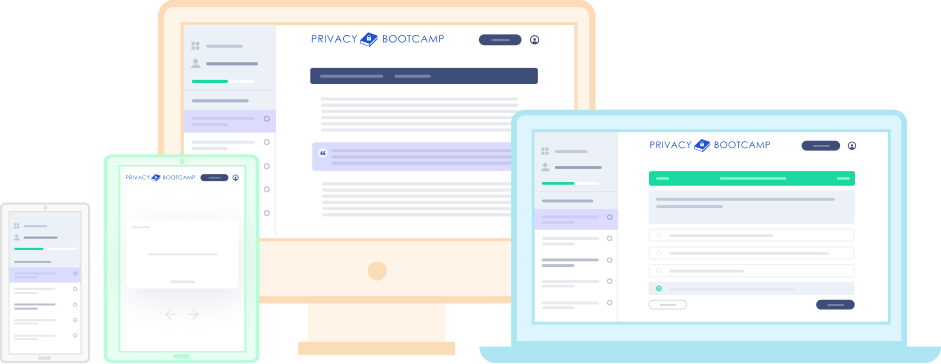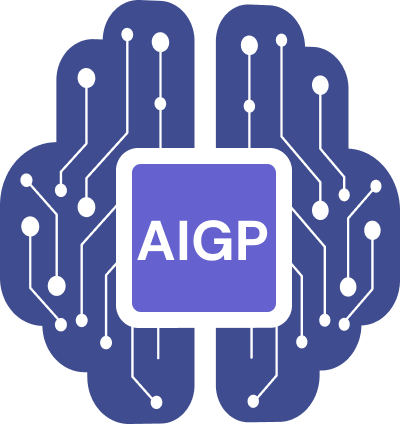Your Path to Certification Starts Here

IAPP certification is quickly becoming a "must have" for any professional working in privacy and data protection.
Advancing your career is just a few clicks away.

IAPP certification is quickly becoming a "must have" for any professional working in privacy and data protection.
Advancing your career is just a few clicks away.

Become a certified expert in U.S. privacy law.
The CIPP/US certification indicates that you know what laws exist and how they are applied in practice. This course will teach you about the United State's sectoral approach to privacy protection. It covers dozens of specific laws and how they are implemented.

Become a certified expert in European data protection law.
The CIPP/E certification indicates that you deep knowledge of the GDPR, the ePrivacy Directive, and other laws. This course will teach you about those laws, including their impact on employment, surveillance, online activity, and other areas.

Become a certified expert in Canadian privacy law.
The CIPP/C certification indicates that you deep knowledge of PIPEDA, the Privacy Act, and provincial privacy laws. This course will teach you about those laws, including their impact on commercial activities and government functions across Canada.

Become a certified expert in privacy program management.
The CIPM certification indicates that you are a skilled and knowledgeable leader when it comes to the practical implementation of privacy principles. This course will teach you how to establish and maintain a privacy program throughout its entire life cycle.

Become a certified expert in privacy engineering and privacy-enhancing strategies for system design.
The CIPT certification indicates that you are an expert in building privacy directly into products and services. This course will teach you about the technical foundations for privacy protection throughout its entire life cycle.

Become a certified expert in governing artificial intelligence and machine learning.
AIGP certification indicates that you are an expert in managing risk across the entire AI Life Cycle. It establishes that you can ensure safety and trust in the development and deployment of ethical AI and ongoing management of AI systems.
Each Privacy Bootcamp course comes with hundreds of digital flashcards.
But flashcards are just one of many of the practice tools you can access by enrolling today.
Others tools include quick reference "cheat sheets," charts summarizing important laws and regulations, and interactive digital exercises.
Preview some example flashcards below.
1/10
True or False: The U.S. Federal Trade Commission has stated that consumers should always be provided a choice before a company collects that consumer's personal data.
Click to Flip
False. While the FTC has encouraged increased and meaningful consumer choice, it has also recognized that consumer choice may not always be appropriate.
2/10
What is the term that is used to describe a "data processor" under the Health Insurance Portability and Accountability Act?
Click to Flip
A "business associate."
3/10
What is generally the primary objective of organizations participating in a Trust Mark program?
Click to Flip
To increase consumer confidence in a company's products and services.
4/10
What is a "layered" privacy notice?
Click to Flip
A type of privacy notice that includes a short notice at the top of the document that sets forth the key points, followed by an option for users to review a more detailed privacy notice.
5/10
According to the Article 29 Working Party (WP29), when monitoring the workplace, which is more important: prevention of harm or detection of harm?
Click to Flip
Prevention is more important than detection.
6/10
Appointing a Data Protection Officer and conducting a Data Protection Impact Assessment can be thought of as supporting what data processing principle?
Click to Flip
The Accountability Principle.
7/10
What is commonly considered the most flexible lawful basis to process personal data under the General Data Protection Regulation?
Click to Flip
The legitimate interest basis.
8/10
What is a centralized model of data governance?
Click to Flip
A model in which one person or one dedicated team is responsible for the privacy functions within an organization.
9/10
Does the PCI-DSS mandate specific compliance programs and policies that payment card industry members must implement?
Click to Flip
No. Even though the PCI Security Standards Council sets the standards, “each payment card brand has its own program for compliance, validation levels and enforcement."
10/10
What are the five steps in the privacy policy life cycle?
Click to Flip
(1) Drafting the policies; (2) Getting necessary approvals; (3) Communicating those policies throughout the organization; (4) Training the necessary stakeholders; and (5) Reviewing the policies to better refine them.
Are you ready for your exam? Test yourself with 10 free practice questions at the links below.

Get a free 10-question CIPP/US practice exam, with instant results.

Get a free 10-question CIPP/E practice exam, with instant results.

Get a free 10-question CIPP/C practice exam, with instant results.

Get a free 10-question CIPM practice exam, with instant results.

Get a free 10-question CIPT practice exam, with instant results.

Get a free 10-question AIGP practice exam, with instant results.